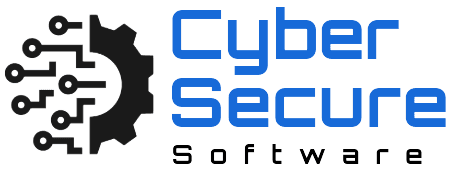Navigating Secure Network Frameworks Effectively
This guide will walk you through the key steps.
Navigating Secure Network Frameworks Effectively
Welcome to Cyber Secure Software, your reliable resource for protecting your network infrastructure. In a time when cyber threats are becoming increasingly advanced and widespread, securing your network is more essential than ever. This detailed guide aims to provide you with crucial strategies and best practices for creating and maintaining a secure network. Whether you are a small business owner or an IT expert, this guide will arm you with the necessary knowledge to defend your network against malicious attacks and protect your data’s integrity.
Understanding the Importance of Network Security
Network security involves the actions taken to safeguard the integrity, confidentiality, and availability of data and resources transmitted across or accessed via a network. To secure a network effectively, a multi-layered strategy must be employed, combining technological solutions with strategic practices.
1. Build a Strong Network Architecture
The basis of a secure network begins with a thoughtfully designed architecture. This includes dividing your network into distinct segments according to function and security requirements. Key components of a secure network architecture include:
Firewalls:
Firewalls serve as the initial line of defense, filtering incoming and outgoing traffic based on established security rules. Utilizing both network-based and host-based firewalls ensures comprehensive protection.Network Segmentation:
Segmenting your network into different zones (such as DMZ, internal, and guest networks) helps contain potential breaches and restrict the spread of threats. Each segment should be secured with its own policies and controls.Intrusion Detection and Prevention Systems (IDPS):
These systems monitor network traffic for suspicious activity and can take real-time action to prevent or mitigate threats.
2. Enforce Strong Access Controls
Managing who can access your network and its resources is crucial to preventing unauthorized access and limiting the impact of security breaches. Key practices include:
Authentication and Authorization:
Implement strong, multi-factor authentication (MFA) to verify the identities of users accessing your network. Access permissions should be granted following the principle of least privilege.Network Access Control (NAC):
Implement NAC solutions to enforce security policies on devices attempting to connect to your network, ensuring only compliant and authorized devices gain access.Regular Audits:
Perform regular reviews of access permissions to confirm their appropriateness and to identify any potential vulnerabilities.
3. Secure Network Devices and Endpoints
Every device connected to your network presents a potential entry point for cyber threats. It’s vital to secure these devices to maintain network integrity. Consider the following measures:
Patch Management:
Regularly update and patch network devices, operating systems, and applications to fix known vulnerabilities. Automated patch management can streamline this process.Device Hardening:
Disable unnecessary services and features on network devices to minimize potential attack vectors. Use strong passwords and apply encryption wherever possible.Endpoint Security:
Deploy endpoint protection solutions, such as antivirus software and endpoint detection and response (EDR) tools, to protect individual devices from malware and other threats.
4. Implement Encryption and Secure Communication
Encryption is a vital aspect of network security, ensuring that data transmitted across your network remains confidential and is shielded from unauthorized access. Key practices include:
Data Encryption:
Encrypt sensitive information both during transmission and while at rest, utilizing strong encryption algorithms and secure protocols (like TLS/SSL) for data communication.Virtual Private Networks (VPNs):
Use VPNs to provide secure remote access to your network, encrypting data sent over public networks to decrease the risk of interception.Secure Communication Channels:
Ensure that all communication methods, including email and messaging systems, are secured with encryption and authentication protocols.
5. Monitor and Respond to Security Incidents
Continuous monitoring and swift responses are critical for detecting and addressing security incidents. Implement the following practices to strengthen your incident response capabilities:
Security Information and Event Management (SIEM):
Utilize SIEM solutions to gather and analyze security logs from various sources. SIEM can offer real-time alerts and facilitate the investigation of suspicious activities.Incident Response Plan:
Develop and maintain a comprehensive incident response plan that outlines steps for identifying, containing, and recovering from security incidents. Regularly test and update this plan to ensure its effectiveness.Regular Monitoring:
Continuously observe network traffic and system activities for signs of anomalies or potential threats. Proactive monitoring can help identify and resolve issues before they escalate.
6. Train and Educate Your Team
Human error is a significant factor in many security breaches. Providing continuous education and training for your team is vital for maintaining a secure network. Focus on these key areas:
Security Awareness Training:
Educate employees about common threats (like phishing) and best practices for security maintenance. Regular training sessions can reinforce security policies and procedures.Simulated Attacks:
Conduct periodic phishing simulations and other security drills to evaluate your team’s response and highlight areas for improvement.
Conclusion
Securing your network necessitates a comprehensive approach that combines advanced technology, strategic planning, and constant vigilance. At Cyber Secure Software, we are committed to assisting you in implementing effective network security measures to stay ahead of evolving threats.
For more information about our security solutions and services, please reach out to us at Cyber Secure Software.
Protect your network and safeguard your digital assets with Cyber Secure Software. Rely on our expertise to navigate the complexities of network security and establish a secure, resilient infrastructure.
